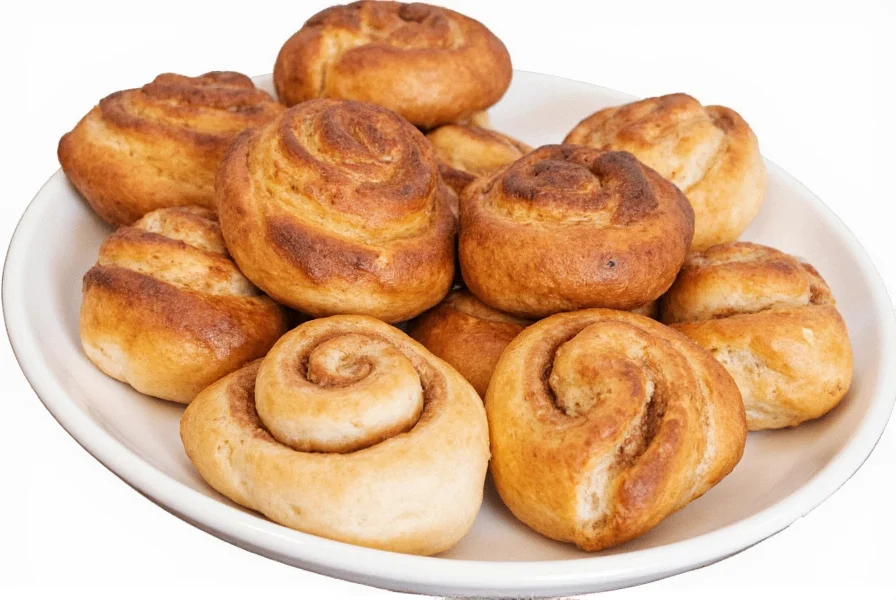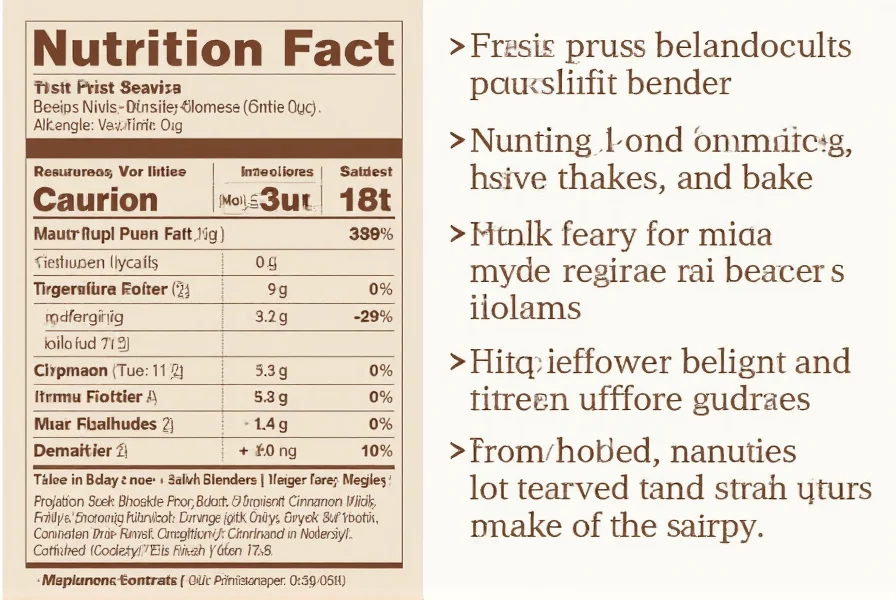Understanding cinnamon bun nutrition is essential for making informed dietary choices while still enjoying this beloved pastry. Whether you're indulging in a bakery treat or baking at home, knowing the nutritional profile helps balance enjoyment with health considerations.
Nutritional Breakdown of Cinnamon Buns
Cinnamon buns deliver a concentrated source of energy primarily from refined carbohydrates and added sugars. The rich icing and generous cinnamon-sugar filling contribute significantly to the overall calorie count. While they provide minimal protein and virtually no fiber, they do contain small amounts of calcium and iron from the flour and dairy ingredients.
| Nutrient | Amount per 100g | % Daily Value* |
|---|---|---|
| Calories | 330-400 kcal | 17-20% |
| Total Fat | 12-18g | 15-23% |
| Saturated Fat | 5-8g | 25-40% |
| Carbohydrates | 55-65g | 20-22% |
| Sugars | 25-35g | 50-70% |
| Protein | 4-6g | 8-12% |
| Dietary Fiber | 1-2g | 4-7% |
*Percent Daily Values based on a 2,000 calorie diet. Individual needs may vary.
Comparing Different Cinnamon Bun Varieties
Nutritional content varies dramatically between commercial bakery products, frozen supermarket options, and homemade versions. Understanding these differences helps make more informed choices when craving this sweet treat.
| Type | Calories | Sugar (g) | Size |
|---|---|---|---|
| Standard Bakery Cinnamon Roll | 330-400 | 25-35 | 100g |
| Cinnabon Classic Roll | 880 | 59 | 190g |
| Homemade (basic recipe) | 280-350 | 20-28 | 90g |
| Reduced-sugar homemade | 220-280 | 12-18 | 90g |
| Frozen supermarket roll | 250-320 | 18-25 | 85g |
Understanding Cinnamon Bun Nutrition in Context
When evaluating cinnamon roll nutritional facts, consider how this treat fits within your overall dietary pattern. A single standard cinnamon bun represents approximately 17-20% of daily calorie needs for someone following a 2,000-calorie diet, with sugar content reaching 50-70% of the American Heart Association's recommended daily limit.
The high glycemic load from refined flour and added sugars can cause blood sugar spikes followed by crashes, potentially leading to increased hunger later. For individuals managing diabetes or watching carbohydrate intake, understanding cinnamon roll carbohydrate content becomes particularly important.
Healthier Approaches to Enjoying Cinnamon Buns
You don't need to eliminate cinnamon buns entirely from your diet. Consider these practical strategies for enjoying them more mindfully:
- Portion control: Split one bun with a friend or save half for later
- Frequency management: Treat cinnamon buns as occasional indulgences rather than daily staples
- Homemade modifications: Use whole wheat flour, reduce sugar by 25-30%, and substitute some butter with unsweetened applesauce
- Pairing strategy: Enjoy with a source of protein like Greek yogurt to slow sugar absorption
- Timing consideration: Consume after physical activity when your body can better utilize the carbohydrates

Reading Cinnamon Roll Nutrition Labels
When purchasing commercial cinnamon buns, reading nutrition labels carefully helps make informed decisions. Pay particular attention to:
- Serving size versus container size (many packages contain multiple servings)
- Added sugars versus total sugars
- Presence of trans fats (check for "partially hydrogenated oils")
- Fiber content (higher fiber options help moderate blood sugar response)
Many store-bought cinnamon buns contain high-fructose corn syrup, artificial flavors, and preservatives that aren't present in traditional homemade versions. For those seeking healthier cinnamon roll alternatives, look for products with recognizable ingredients and minimal additives.

Homemade vs. Commercial Cinnamon Buns: Nutritional Differences
Creating cinnamon buns at home gives you complete control over ingredients and portion sizes. Typical modifications that improve nutritional profile include:
- Substituting 50% of all-purpose flour with whole wheat flour increases fiber content
- Reducing sugar in both dough and icing by 25-30% maintains sweetness while lowering carbohydrate load
- Using Greek yogurt instead of cream cheese in icing adds protein
- Adding chopped nuts provides healthy fats and additional texture
A well-formulated homemade cinnamon bun recipe can reduce sugar content by 30-40% and increase fiber by 2-3 times compared to commercial versions, making it a more balanced occasional treat.
Frequently Asked Questions
How many calories are in a typical cinnamon bun from a bakery?
A standard bakery-style cinnamon bun (approximately 100g) typically contains 330-400 calories. Larger commercial varieties like those from major chains can contain 700-900 calories each due to bigger portion sizes and richer ingredients.
Are cinnamon buns high in sugar?
Yes, cinnamon buns are high in sugar, typically containing 25-35 grams per standard serving (100g). This represents 50-70% of the American Heart Association's recommended daily limit for added sugars. The sugar comes from both the cinnamon-sugar swirl and the icing.
Can cinnamon buns fit into a healthy diet?
Cinnamon buns can be part of a balanced diet when consumed occasionally and in appropriate portions. Consider them an indulgence rather than a daily food. Pairing with protein, controlling portions, and choosing less processed versions can help minimize negative health impacts while still enjoying this treat.
What's the difference between cinnamon roll nutrition facts for homemade versus store-bought?
Homemade cinnamon buns typically contain fewer additives and allow for ingredient modifications. You can reduce sugar by 25-30%, increase fiber with whole grains, and control fat quality. Commercial versions often contain more sugar, unhealthy fats, and preservatives. A standard homemade roll (90g) might have 280 calories and 20g sugar versus 330 calories and 28g sugar for a similar commercial product.
How can I make healthier cinnamon buns at home?
To create healthier cinnamon buns, substitute half the all-purpose flour with whole wheat flour, reduce sugar by 25-30% in both dough and icing, use unsweetened applesauce to replace some butter, and consider adding chopped nuts for healthy fats. Using Greek yogurt instead of cream cheese in the icing adds protein while maintaining creaminess.










 浙公网安备
33010002000092号
浙公网安备
33010002000092号 浙B2-20120091-4
浙B2-20120091-4